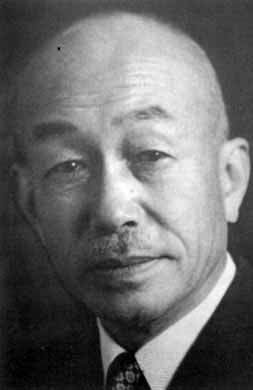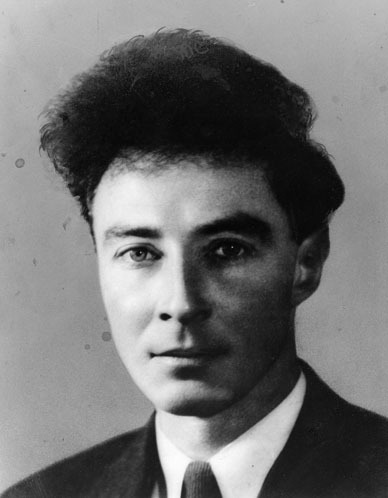Marc Abrahams's Blog, page 391
July 18, 2014
The IBM Songbook (an analysis)
It’s been said that “The use of music in organizational management is a rare occurrence.” Rare maybe, but not unknown. A notable exception was Thomas John Watson, Sr. who was long-time chairman and CEO of International Business Machines – more commonly known as IBM. Authors Amal El-Sawad and Marek Korczynski of Loughborough University, UK have analyzed IBM’s ventures in motivational management music in their paper for Group & Organization Management 2007 32: 79.
“There is some dispute about Watson’s interest in music. According to Maney (2003),Watson Sr. loved to sing and dance, whereas his official biographers describe him as ‘tone deaf and unmusical’ (Belden & Belden, 1962), though of course these two descriptions need not be mutually exclusive.”
Bonus [1]: Another, more modern, song about IBM “Cos we are special”
Improbable has not been able to verify the authenticity of this video. Can anyone tell us if it’s an ‘official’ IBM production?
Bonus [2]:
IBM itself kindly provides a list of songs from the songbook, may we recommend :
• Song 39. TO WILLIAM MacLARDY, MANAGER, EXHIBIT AND DISPLAY, DEPARTMENT, I.B.M.
• Song 17. PAINTING THE CLOUDS WITH SUNSHINE, (By J. P. Saxton, Endicott Factory), and
• Song 56. OUR PRESIDENTíS MOTTO: “THINK”
Note: It’s far from clear whether Watson actually did say “I think there is a world market for maybe five computers.”

Wellerstein peers at the hair of physicists
Before there was a Luxuriant Flowing Hair Club for Scientists (LFHCfS), there were indeed scientists who had luxuriant flowing hair. Alex Wellerstein, a (or in the view of pedants, an) historian of science at the American Institute of Physics, peers back at the hair of several physicists in the 1930s. Wellerstein’s essay, called “The Hair of Physicists (1930s)“, says in part:
Sam [Schweber] compared Oppenheimer and Bethe in terms of their ethics and behaviors…. I want to compare them by a different, perhaps more frivolous metric: their hairstyles in the 1930s. Because both young Oppenheimer and young Bethe rocked some considerable hair back in the days before the bomb.
All of the below images come from the amazing Emilio Segrè Visual Archives at the American Institute of Physics — my employer. These are very low-resolution versions of the images in question; the high-res files are impressively detailed. It is one of the perks of the job that I can look through these images; if you’re ever doing anything where you need an image of a physicist, definitely go to the ESVA first.
All right, let’s start with Oppenheimer:
(Thanks to Margaret Harris for bringing this to our attention.)

July 17, 2014
For more emotional snacking, a patent for culinary theme songs
Innovation can be a matter of joining together things that the patent office — and maybe customers — will approve of. Corn chips, song, and the Internet are obvious influences on US patent 7942311, “Method for sequencing flavors with an auditory phrase,” granted May 17, 2011 to George Eapen of Frisco, Texas. Eapen assigned rights to Frito-Lay, the corn chip behemoth….
—so begins today’s Improbable Innovation nugget, which appears in its entirety on BetaBoston.

If you’re going to be shot, it’s safer to be naked, in a way
Yes, if you’re going to be shot, it’s safer to be naked, in a way, says this study:
“Clothing increases the risk of indirect ballistic fractures,” David C. Kieser, Debra J. Carr, Sandra CJ Leclair, Ian Horsfall [pictured here], Jean-Claude Theis, Michael V. Swain, and Jules A. Kieser, Journal of Orthopaedic Surgery and Research, vol. 8, no. 1, 2013, pp. 1-7. (Thanks to investigator Ivan Oransky for bringing this to our attention.) The authors insist:
The objective of this study is thus to determine the effect of clothing and soft tissue thickness on the risk of indirect fracture formation.
Methods: Twenty-five fresh red deer femora embedded in ballistic gelatine were shot with varying distances off their medial cortex with a 5.56 × 45 mm North Atlantic Treaty Organization (NATO) bullet while being filmed with a slow-motion video. We compared the effect of two different gelatine depths and the effect of denim cloth laid onto the impact surface of the moulds.
Results: Bullet passage in thinner moulds failed to cause fracture because the bullet exited the mould before a large expanding temporary cavity was produced. Clothing dramatically altered the size and depth of the expanding cavity, as well as increased lateral pressures, resulting in more severe fractures with greater bullet distances from the bone that can cause fracture.
Conclusions: Clothing increases the risk of indirect fracture and results in larger, more superficial temporary cavities, with greater lateral pressures than are seen in unclothed specimens, resulting in more comminuted fractures.
BONUS: Co-author Horsfall is also known for his work with knives.

July 16, 2014
“The Understanding of Pans in 3- to 6-Year-Old Children”
A psychology study with an easily-misunderstood title — “The Understanding of Pans in 3- to 6-Year-Old Children,” — may explain, a little, why young children sometimes watch the same videos over and over again.
For anyone who makes videos for children (and of course for parents), this little experiment may be worth a couple of looks….
—so begins today’s Improbable Innovation nugget, which appears in its entirety on BetaBoston.

Hydraulics Tip (penile): ‘A Reservoir Within a Reservoir’
Having seen a reservoir within a disused reservoir within “a sixty eight year old gentlemen [sic] presenting with a cystic abdominal mass and bothersome LUTS“, a team of doctors reached a firm conclusion. They present it in this study:
“‘A Reservoir Within a Reservoir’ — An Unusual Complication Associated With A Defunctioned Inflatable Penile Prosthesis Reservoir,” Hamid Abboudi, Marco Bolgeri, Rajesh Nair, Andrew Chetwood, Andrew Symes, Philip Thomas, International Journal of Surgery Case Reports, epub 2014. (Thanks to investigator Ivan Oransky for bringing this to our attention.) The authors, at Royal Sussex County Hospital in Brighton, UK, write:
“It is our belief that a defunctionalized reservoir serves no purpose; rather it can only cause trouble in the future. Consequently, at our institution we do not leave defunctionalized reservoirs in situ.”

Hairline Design with Lasers
“Hairline design is a combination of science and art.” say hair transplant practitioners at the DHT Clinic (Bangkok, Thailand) prompting them to invent a new technique which they call ‘Hairline Design Laser‘. (A phrase they like to use: “LASER assisted rapid hairline design”.)
“
Hairline placement is important. It frames the face and has the most impact on a patient’s appearance. Instead of a monotonous universal bell shape, the hairline should be designed to match the individual’s facial contour for the best aesthetic result.”
 Also see: regarding the history of hair transplantation, the pioneering work of Dr. Hajime Tamura (1897 – 1997) who, it’s said, “performed many hair transplant procedures when he was Professor of Urology at Tokyo Women’s Medical University. It was reported that 127 cases in 1937 failed but 136 cases after 1939 showed good results.”
Also see: regarding the history of hair transplantation, the pioneering work of Dr. Hajime Tamura (1897 – 1997) who, it’s said, “performed many hair transplant procedures when he was Professor of Urology at Tokyo Women’s Medical University. It was reported that 127 cases in 1937 failed but 136 cases after 1939 showed good results.”

July 15, 2014
Historical ambulatory monitoring of hot flashes (1979)
A look back at a moment in the technological history of monitoring hot flashes:
“Investigation of hot flashes by ambulatory monitoring,” G.W. Molnar, American Journal of Physiology, 1979 Nov;237(5):R306-10. The author reports:
“The unpredictability of hot flashes makes their investigation difficult. A method for continuous monitoring of subjective arousals and their objective correlates is here described and illustrated with results from one subject. Temperatures of special interest with respect to hot flashes—toe, cheek, vagina, and air—were recorded on a protable magnetic tape during routine living at home. The subject signaled the “on” and “off” of each perceived flash with a hand switch and also entered information in a notebook. She signaled 63 flashes on 5 days, during which the cheek and toe temperatures showed transient increments. Some of the flashes were labeled uncertain in the notebook. The subject also had 23 episodes of these temperature increments that she did not identify by signals as flashes. In these episodes, therefore, the mechanism of consciousness was not activated. Perceptions that coincided with transient temperature increments thus ranged as follows: subconscious, uncertain, definite but bearable, mildly distressful, and strongly distressful.”

July 14, 2014
Faces in the crowd can make Big Data more valuable
Your ability to spot a weird face might be worth big money in this, the dawning era of Big Data. A statistical technique called “Chernoff faces” transforms mulivariate data — numbers that tend to make people feel numb — into quirky/goofy cartoon faces.
Oddball items in the data stand out. You’ll more likely to recognize an unusual face than you will an unusual number….
—so begins today’s Improbable Innovation nugget, which appears in its entirety on BetaBoston.

Handshakes galore – but do they work? An analysis.
 Search the archives of any upscale picture library [example] and you’ll find hundreds, perhaps thousands, of photos featuring business-persons earnestly shaking hands. But does handshaking actually have any real effect at, say, a business meeting? For the first time (?) an experimental study has examined whether handshaking might (or might not) help in cooperative dealmaking situations.
Search the archives of any upscale picture library [example] and you’ll find hundreds, perhaps thousands, of photos featuring business-persons earnestly shaking hands. But does handshaking actually have any real effect at, say, a business meeting? For the first time (?) an experimental study has examined whether handshaking might (or might not) help in cooperative dealmaking situations.
“In this paper, we proposed and found that handshakes increase cooperative behaviors, affecting outcomes for both integrative and distributive negotiations.”
- say a team of authors from University of Chicago – Booth School of Business, and Harvard Business School. Their new working paper ‘Handshaking Promotes Cooperative Dealmaking‘ can be read in full online. Details are, of course, gripping:
“We show that handshakes increase cooperative behaviors, affecting outcomes for integrative and distributive negotiations. In two studies with MBA students, pairs who shook hands before integrative negotiations obtained higher joint outcomes (Studies 2a and 2b). Pairs randomly assigned to shake hands were more likely to openly reveal their preferences on trade-off issues, which improved joint outcomes (Study 3). In a fourth study using a distributive negotiation, pairs of executives assigned to shake hands were less likely to lie about their preferences and crafted agreements that split the bargaining zone more equally.”
BONUS (possibly unrelated): Jiggling and scanning the brains of cadavers

Marc Abrahams's Blog
- Marc Abrahams's profile
- 14 followers




